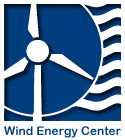Individual-based tracking studies are critical for assessing potential effects of offshore wind energy facilities on target bird populations. Since 2013, we have worked in collaboration with the U.S. Fish and Wildlife Service and with funding from the Bureau of Ocean Energy Management, to track the movements of conservation focal species (including American Oystercatchers, Common Terns, federally-endangered Roseate Terns, and federally-threatened Piping Plovers) throughout the southern New England region using light-weight digital VHF transmitters (nanotags) and an array of automated radio telemetry stations. The primary objectives of the study are to utilize and refine nanotag technology for tracking flight paths of birds in offshore environments. The results of the study will assist BOEM and partners in determining the potential effects of offshore wind energy development on migratory bird populations.
Tracking the Movements of Conservation Focal Species in Southern New England Using Nanotags
Date:
Thursday, December 3, 2015 - 4:00pm
Location:
Gunness Student Center conference room, Marcus Hall
Year:
2015
Semester:
Speaker(s):

